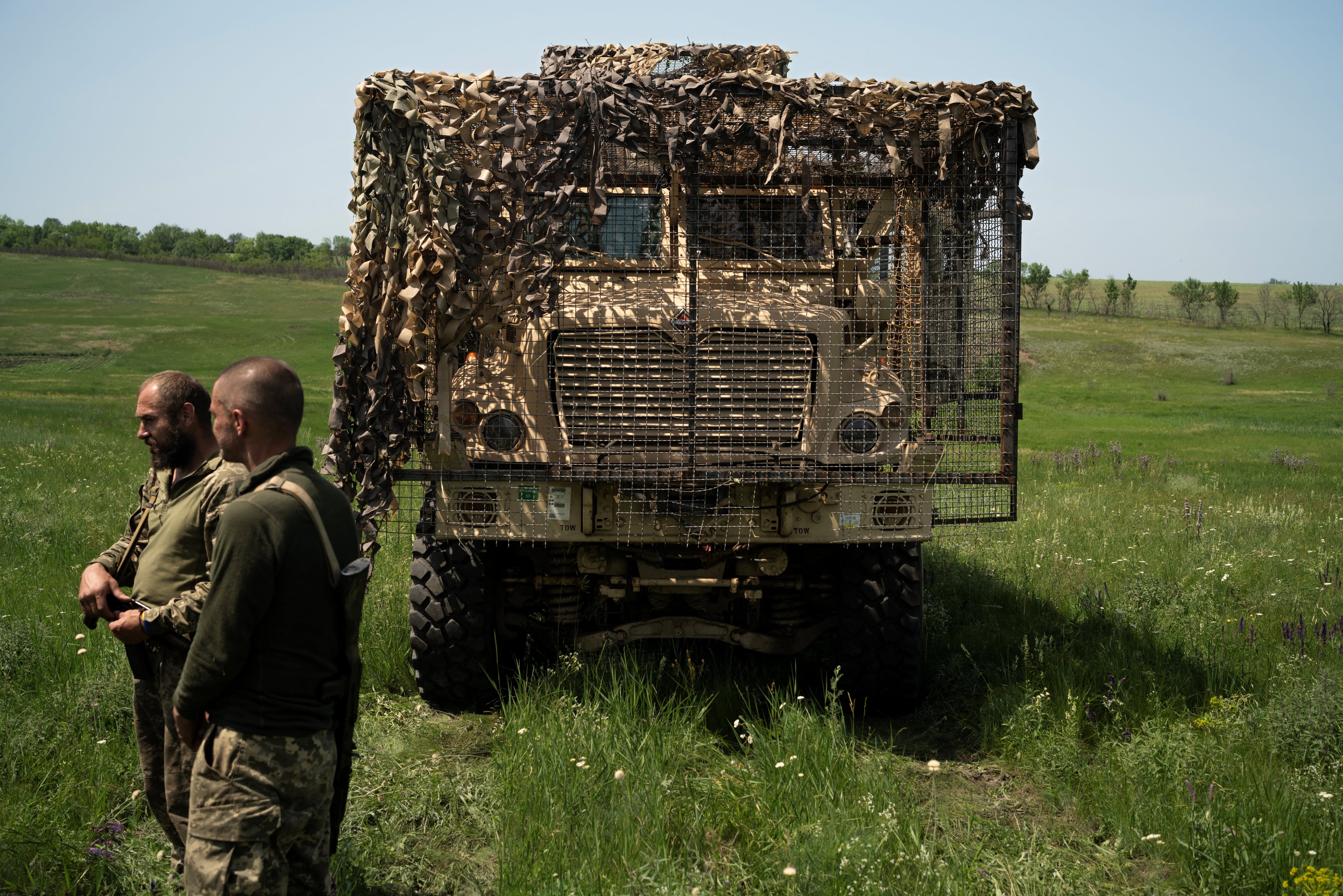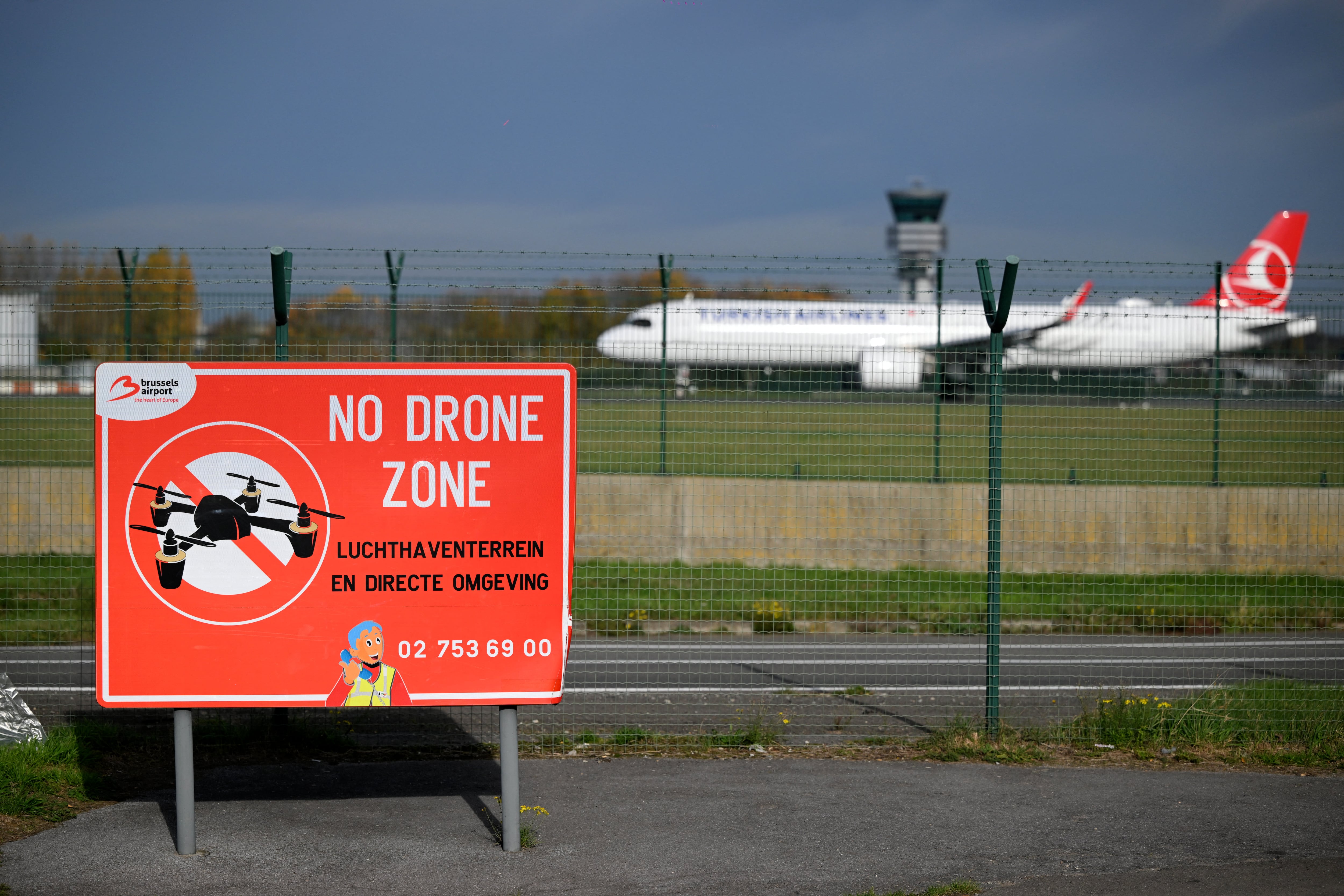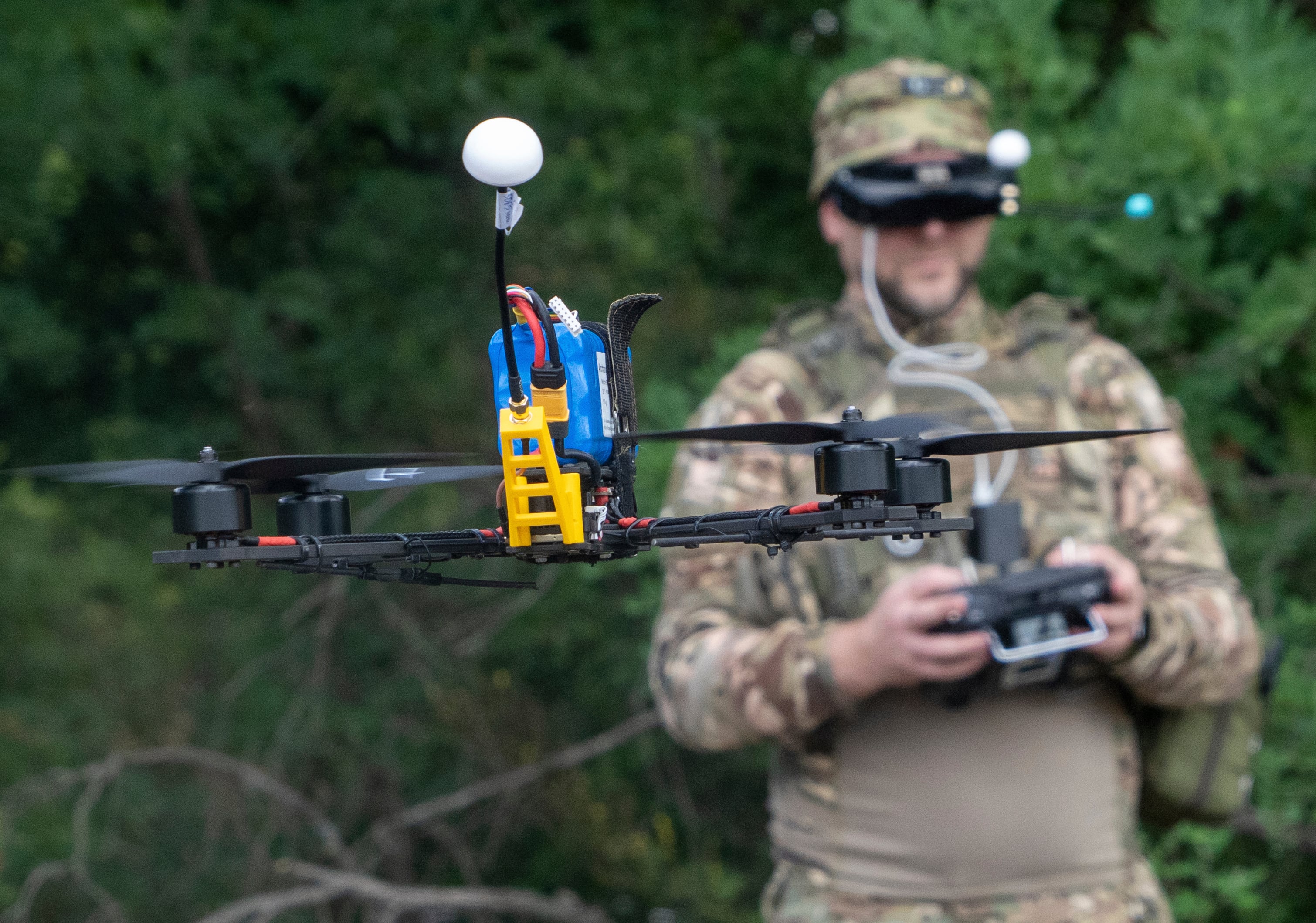![Christian-Becker [ID=22104043]](http://www.gannett-cdn.com/-mm-/521cd80a4fb9f1f1edf37d025629b379daee5bba/r=500x332/local/-/media/2015/01/21/C4ISR/C4ISR/635574354993305894-Christian-Becker.jpg)
Editor's Note: This article was originally published on Jan. 22, 2014.
Rear Admiral Christian Becker is dual-hatted as the program executive officer of PEO Command, Control, Communications, Computers and Intelligence (C4I), and PEO Space Systems.
PEO C4I acquires, fields and supports C4I systems that extend across Navy, joint and coalition platforms. This includes managing acquisition programs and projects that cover all C4I disciplines: applications, networks, communications and ISR systems for afloat platforms and shore commands. PEO Space Systems coordinates all Navy space research, development and acquisition activities.
Becker's operational assignments include deployments as an EA-6B electronic countermeasures officer, and his acquisition assignments include serving as a program manager for a national security space system at the National Reconnaissance Office. He spoke to C4ISR & Networks Editor Barry Rosenberg about the Consolidated Afloat Networks and Enterprise Services (CANES) program and Navy satellite communications.
With support of the warfighter a given, what's at the top of your to-do list?
BECKER: Well, first let me say thanks for starting with support of the warfighter because for us it starts there and it ends there, and I appreciate your initial focus on that. In terms of implementation CANES is the topic that I see every day and touch in some way, shape, or size. And the reason for that is not that it's necessarily more important than the rest of the portfolio, but in its way it is fundamental to many of the initiatives that we have for delivering C4I capabilities to the fleet. Because as we install CANES we create a platform where we can evolve our capabilities. As we install CANES we create a platform where we can increase our speed to capability, and we can control more effectively our cost of capabilities that ride on top of that platform. And then, of course, that brings with it our ability to defend our capabilities—our cyber security posture—in ways that are more effective both for cost and the mission.
So what would be some of those evolved capabilities that CANES will facilitate?
BECKER: For starters simple things like running modernized operating systems. The operating systems that exist today on some of those legacy networks are not sustainable. CANES allows us to bring in current operating systems and then upgrade or stay current with future changes to those operating systems in ways that are more easily adapted or easily implemented than the current structure.
To give you some background, we developed networks to meet fleet capabilities in product-oriented ways that led to multiple networks. With CANES we try to become more intentional about delivering that platform upon which then we can create or incorporate new mission capabilities. And again, that's everything that is as fundamental as enabling the control, if you will, of the operating systems to maintaining pace with any cyber security vulnerabilities that develop.
And CANES is only part of the picture.
BECKER: To create that platform I also need to make sure that I can move information towards the edge of the platforms, and that's where I need Automated Digital Network System (ADNS). What ADNS allows us to do is pick the way in which we can most effectively move information from the platform towards our off-board capability. Very loosely, think of it as your router. Whether you have cable or fiber or Wi-Fi, how's it going to find the right place to get off to the next transport mechanism? ADNS allows us to pick the path we will use to get off the ship.
The next step is the Navy Multiband Terminal (NMT), which allows us to access a number of satellite communications capabilities. So once I put together that trifecta of CANES, ADNS and NMT, I have access to the rest of the network with a capital N, and that platform becomes an extension of that network and becomes a node—a fully informed and plugged-in node of that network.
I'm an aviator so here's the metaphor I use. When I started flying about three decades ago we had A-6s and couple of versions of those in the inventory. We had A-7's, F-14s and F/A-18s, each with a couple different versions. So we had many strike platforms. Today we have the Super Hornets, F/A-18E/F. We've compressed those missions from the A-6, A-7, the F-14 and the earlier F/A-18s, which are now celebrating their 35th anniversary, into the Super Hornet.
What a tremendous platform the Super Hornet is. But without the sensors, without the radar, without the communication systems, without the self-protection mechanisms, without the weapon systems that hang on the wings, without all those other features it's a really cool airplane but it's not a mission-capable platform.
I can deliver the trifecta of CANES, ADNS, and NMT, but then I need to develop, deliver and sustain the capabilities and the applications that ride on that network. Using the metaphor of the Super Hornet, once we deliver that platform we can then take that same capability to support those applications that deliver the mission space of C4I.
Installation of the first CANES systems on the Arleigh Burke-class guided-missile destroyers USS McCampbell and USS Milius has been completed, and you're moving ahead on additional installations, but you've been hindered by the sequester and other issues. Please bring me up to date on CANES installation.
BECKER: The first installation of any new system is always difficult. And we tried to lead-turn as much as possible the difficulties that we'll see in a new platform. But we've had some learning to get through. We've completed the installation on McCampbell, which is part of our forward deployed naval forces, operating out of Japan. Within days of completing the installation, McCampbell was en route to support Operation Damayan, the relief effort in the Philippines.
First indications are that McCampbell operated very successfully using CANES, and it was a significant improvement to the previous network that she operated. That's really good, positive news. We also identified some issues, and we were glad to hear about those because that gives us the opportunity to roll what I call lessons observed into lessons learned by acting on them with future installations.
Can you tell me about some of those lessons observed?
BECKER: Lessons learned have run the gamut from logistics to hardware. There were some simple things like making sure that we conduct all of the necessary logistics preparations for things like printer toner. We knew that we might have an issue there and sure enough we did. And so we've looked to see how we can improve some of that logistics tail for the hardware. Early on, even with Milius, we understood that our training was not where it needed to be. And the performance of our preparation was insufficient to prepare our sailors to operate the system. We're working on that. And so far the feedback on the changes to our training has been positive, but we will keep at it until we have it right.
Currently we're still working initial operational testing on Milius. That's brought its own challenges. And both with McCampbell and Milius we discovered a hardware issue that we needed to address with our power supply system. We've addressed it and fixed that in those vessels and also in future installations.
We're underway now with installations on USS Laboon and USS McFaul, and USS Chafee as well. In addition we're installing CANES on our first big decks, the USS Wasp (an amphibious assault ship designed for VTOL aircraft), as well as two aircraft carriers, the USS John C. Stennis and the USS Dwight D. Eisenhower.
How many CANES installations do you expect in the fiscal 2014-2015 timeframe?
BECKER: It's what I've determined is our mission statement, which is to develop, deploy and sustain the most effective information dominance capabilities our nation can afford. How many installations can we afford in FY14? That'll be driven both by the budget but also by the fleet's mission needs. We will continue to work in close cooperation with the fleet and our sponsor from OpNav to determine what that best plan forward is for fiscal '14 and beyond.
Northrop Grumman is the prime on CANES today, but you'll be competing that contract. Please tell me about your plans for competition on the program.
BECKER: We are currently in execution of a source selection so that will limit the depth of my comments. But we are currently in the source selection for the production contract for future production levels of CANES. And we've implemented some innovative approaches to that production and how we will award scope to successful industry partners through that competitive process. Once that competition is complete, we'll be able to share more details about it and we'll understand more clearly what the effect is. But as we move to that production contract we will continue to use the (advantage) of competition, which I think is good for all of us, for the government and for our industry partners.
Moving to PEO Space Systems, you recently participated in the development and launch of a pair of cubesats, or nanosats. What sort of space capabilities is the Navy looking for from these small space platforms?
BECKER: With these nanosats launched as part of a broader operationally responsive space mission, we're continuing the proud heritage of Navy in space. In regard to nanosats, I think there's a very intriguing opportunity there to understand what that technology can bring to mission capability on a variety of fronts.
First, by building rapidly and cost effectively we can develop interesting capabilities and experiments to understand things about space and missions in space that perhaps we could not accomplish with a more traditional long-term ACAT 1-sized program. Perhaps even as important as that is we continue to develop tomorrow's cadre of space engineers and operators who will take us into the future, working with institutions like the Naval Post Graduate School and also maintaining close ties with the laboratories like the Naval Research Laboratory and Johns Hopkins.
What were the Navy payloads on the nanosats?
BECKER: We had a JCTD (Joint Capability Technology Demonstration) of two nanosat payloads and they're exploring some communications capabilities. We have turned on the systems for one of them. For the other we're evaluating some performance of the batteries based on solar heating. We happen to be at a particularly high level of exposure to the sun. That period is just eclipsed, so we'll be able to operate that second satellite now more fully.
The Navy has long been a leader in satcom capabilities due to the nature of its missions at sea. Where do you envision Navy satcom going forward, and what continuing role will commercial providers play in providing bandwidth?
BECKER: I'll roll the clock back to 1990 when I was sitting on the USS Independence in the North Arabian Sea, and our way to get the air tasking order was for a utility airplane to fly the inches-thick document to us from Riyadh. That really wasn't a sufficient way to move information on and off of ships.
Today we are blessed with a cornucopia of ways to deliver information to our vessels at sea—some of them from commercial providers and some from military providers. And that has allowed us to significantly affect operations at sea, everything from the command and control and ISR, to quality of life issues for our sailors—with better capabilities for things like phoning home, banking and browsing, etc.
Going forward, we have to maintain a focus on what we need and what we have, and deliver capabilities that we can sustain both in peacetime operations and in times of conflict or scarcity. We will continue to execute that with a variety of both commercial systems and military satellite communication systems.








